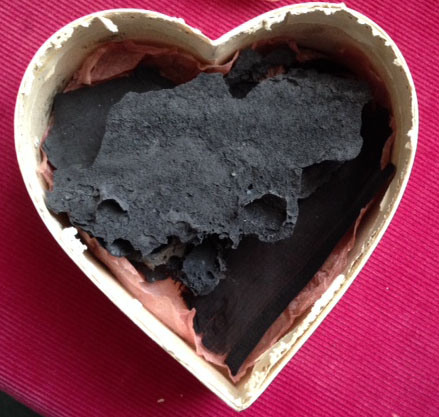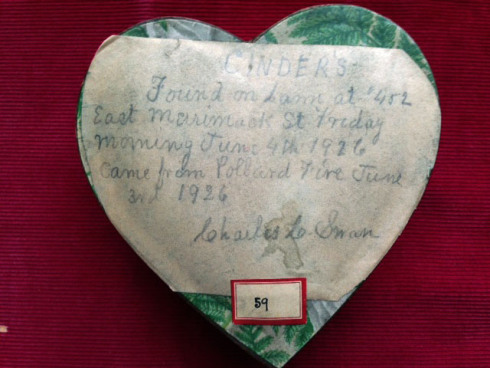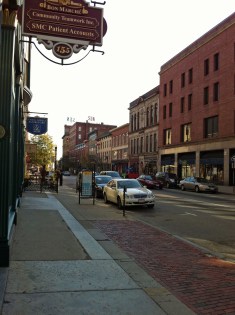As the Lowell Historical Society’s newly appointed Curator – Ryan Owen – continues his work with the Collection, he will report on the oddities and curiosities that one finds in a collection as old and diverse as this Lowell collection. He’d welcome your comments! Here’s his latest find…
At the Lowell Historical Society, we sometimes get the question: ”Hey, what’s the strangest thing you have in your collection?”
That’s a tough question to answer. The Lowell Historical Society has been around for a long time. I’m reminded of this each time I visit our archive. Just this morning, I found a book, one of those old official-looking volumes with the word ‘records’ embossed on its side, that contains minutes from a few decades of our board meetings, starting from 1943. And then, just next to that, was a stack of correspondence with donors from 1973. All of this is impeccably preserved.
But the Society’s collection is much older than that. Its history dates back to its founding in 1868.
That’s a lot of time to collect odd things, that have since become old.
When I stumble upon these, I often think of the question: ‘If you didn’t know to ask for it, how would you ever find it? Or even know it exists?’
This is exactly the case with our Box of Cinders.

Yes, the cinders, or ashes, are in a heart-shaped box. As we’re currently in mid-February, I suppose that’s sort of seasonally appropriate. The note attached to the top of the box, which probably accompanied the donation some ninety-ish years ago, identifies the remains within the box not as . . . some long-lost loved one, but as what one Charles C. Swan, a retired shoe dealer, found on his lawn one Friday morning on June 4, 1926. The note actually provides a lot of information, which is great. What’s sadly lacking is some explanation as to why the ashes were put, and kept, in a heart-shaped box, for these last 88 years. This informational gap is perhaps one of the greatest tragedies in our collection. Some questions just don’t have a satisfying answer.

Most folks, after finding something on their lawn one morning, probably wouldn’t think of donating it to their local historical society, but Charles C. Swan must have been a bit of a visionary. And he was the treasurer of the Lowell Historical Society at the time. So, he understood the significance of historical events when he saw them unfold.

Charles C. Swan probably saw the flames consuming Pollard’s Department Store the afternoon before, maybe from his home a mile away, at 452 East Merrimack Street. Or maybe he was downtown as the chaos unfolded late that afternoon. Maybe he saw the firemen arrive, first from the Lowell Fire Department, then from the surrounding towns of Billerica, Chelmsford, and Dracut. Firemen from as far away as Lawrence came to join in the fight to save one of Lowell’s largest department stores. No one died, but several firemen were overcome by the billowing smoke or cut by flying glass. Four hours later, the fire was history. But, so was Pollard’s Department Store, which traced its roots in Lowell to 1836. Only its walls remained. In the eyes of many, including Charles C. Swan, it truly was a Lowell institution, whose loss would be keenly felt. Mr. Swan probably couldn’t imagine Lowell without it.
Charles C. Swan must have been overcome at that moment, the next morning, when he found a piece of that history on his lawn. When he picked it up, and held it – maybe even as the smell of the smoke that had consumed Pollard’s still hung in the air. So, he found a box in his home on East Merrimack, the heart-shaped box, and saved that little bit of history for posterity by donating his find to the Lowell Historical Society.

And it worked too. Those ashes, which otherwise would have likely blown away in the next spring breeze, or melted into his lawn with the next spring rain, way back in June 1926, are still carefully held and preserved by the Society today. They’ve survived Charles C. Swan, who died a few years later in 1929, and even the great Pollard’s Department Store, which subsequently rebuilt and reopened, but then closed its doors for good in 1969.
Sometimes the most fragile relics are those which survive the longest.
About these ads
